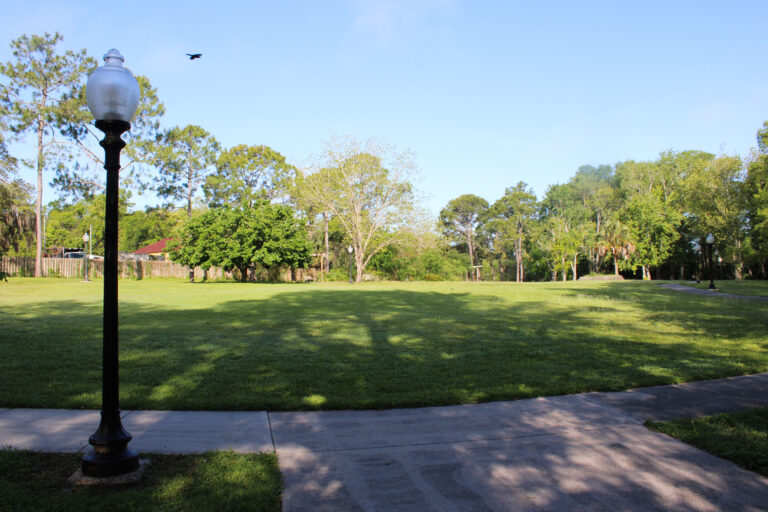Legacy Post Disclaimer
This is a #Legacy post imported from The Apalachicola Time’s previous platform. If you’re experiencing issues with this article, please email us at news@nevespublishing.com.
Creeping indigo can become a nightmare
The term creeping has many negative implications. It generally conveys sneaky behavior with potentially malevolent intent.
Fairytales, from the Brothers Grimm to J.R.R. Tolkien have characters which fit the following description: to pursue or follow someone in a persistent, secretive way with less than honorable objectives.
By creeping the goal is to advance gradually and unnoticed, then infringe on some aspects of the target’s existence. In Gulf and Franklin County’s botanical population, both native and exotic, is under threat daily from a creeping plant.
Creeping indigo (Indigofera spicata) is a weed with many traits equivalent to a malicious stalker whose sole purpose is to conquer territory and supplant the current inhabitants. This commonly overlooked exotic invader does not get the attention of the long list of infamous invasive plants such as kudzu, cogon grass, and climbing fern.
A native of Africa, this plant is a legume. Most legumes are viewed favorably by the agricultural community since they possess nitrogen-fixing bacteria in their root nodules.
Creeping indigo was introduced from Ceylon to Gainesville around 1925 as part of a research project in Florida to investigate several properties including nitrogen fixation and it’s potential as a forage crop for the livestock industry.
While this species was considered to have a good nitrogen fixing capacity, there were other features which were not appreciated. Livestock toxicity issues began to be a concern of researchers as early as 1933.
Historically, most of the Indigofera species were used for production of indigo dye produced deep blue shades in a variety of textiles. Over time this stable dye became a valuable commodity and was hauled by way of pack animals to distant locations for barter in ancient markets and bazaars.
Creeping indigo does not contain as much dye as other species in its genus and was ignored as a valueless weed until the early 20th century. Legumes such as clovers and peanut hay make excellent forage, but there is a constant search for the next improved option.
When early tests as potential forage were conducted on rabbits, one did not survive the initial grazing trial. The surviving rabbits recovered after creeping indigo was removed from the diet.
Besides rabbits, equine, cattle, sheep, goats, guinea pigs, and birds have also been poisoned by this exotic plant. Swine, demonstrating exceptionally good sense despite their boorish table manners, will not eat this plant and have avoided it in feeding trials.
Identification of creeping indigo in the autumn and winter is aided by the very distinctive seed pod clusters. Seed pods are straight and approximately an inch long in densely packed groups of about one hundred pods per stalk.
These downward-pointing clusters are bright green when immature, but dry to a matte black. The pods easily shatter when bumped or struck by an animal and will scatter the tiny seeds within.
The seed can stay viable for many years in the soil, sprouting when conditions become idea.
During the growing season, creeping indigo is a lowing growing plant which lies over in a prostrate fashion potentially reaching six feet in length. Leaves contain seven to nine hairy leaflets with stems displaying hairs, too.
Dainty flower spikes appear at the base of the leaves, and contain numerous pink blooms during the summer. Seed pod development soon follows.
As the attractive flowers disappear, this creeping beauty soon becomes everyone's nightmare. If not controlled immediately after discovery, its presence will drag on for years.
To learn more about this weedy pest in Franklin and Gulf counties, contact the nearest UF/IFAS County Extension Office or visit https://sfyl.ifas.ufl.edu/find-your-local-office/. To read more stories by Les Harrison visit: Outdoorauthor.com and follow me on Facebook.
This article originally appeared on The Apalachicola Times: Creeping indigo can become a nightmare






Meet the Editor
David Adlerstein, The Apalachicola Times’ digital editor, started with the news outlet in January 2002 as a reporter.
Prior to then, David Adlerstein began as a newspaperman with a small Boston weekly, after graduating magna cum laude from Brandeis University in Waltham, Massachusetts. He later edited the weekly Bellville Times, and as business reporter for the daily Marion Star, both not far from his hometown of Columbus, Ohio.
In 1995, he moved to South Florida, and worked as a business reporter and editor of Medical Business newspaper. In Jan. 2002, he began with the Apalachicola Times, first as reporter and later as editor, and in Oct. 2020, also began editing the Port St. Joe Star.